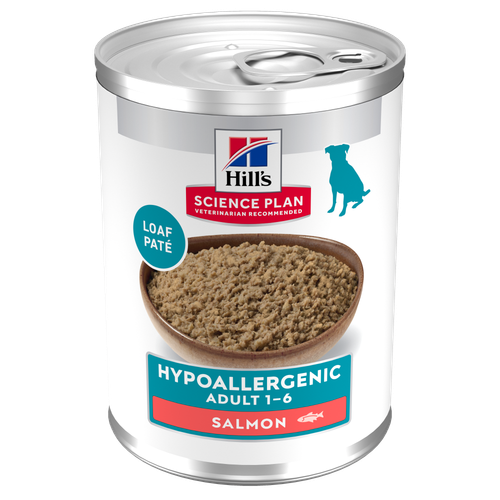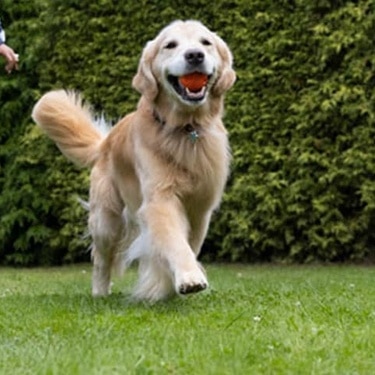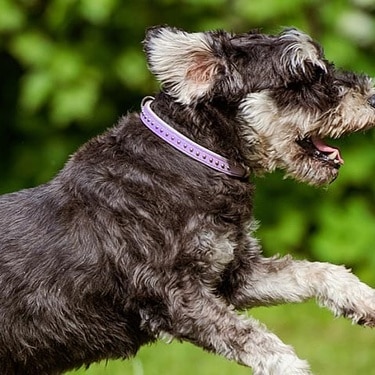
-
Find the right food for your petTake this quiz to see which food may be the best for your furry friend.Find the right food for your petTake this quiz to see which food may be the best for your furry friend.Featured products
 Puppy Food
Puppy FoodHill's Science Plan Puppy Multipack Wet Dog Food with Chicken & Beef are complete premium pet foods for growing puppies from weaning until 1 year old and for pregnant and nursing dogs. Your puppy will love these deliciously smooth and savoury minced loaves, formulated for balanced nutrition and overall health.
Shop Now Adult Wet Dog Food with Beef
Adult Wet Dog Food with BeefHill's Science Plan Adult Multipack Wet Dog Food with Chicken, Beef & Turkey are complete premium pet foods for adult dogs from 1 year. Your dog will love these deliciously smooth and savoury minced loaves, formulated for balanced nutrition and overall health.
Shop Now Mature Adult Dog Food
Mature Adult Dog FoodHill's Science Plan Mature Adult Multipack Wet Dog Food with Chicken & Beef are complete premium pet foods for mature adult dogs from 7 years. Your dog will love these deliciously smooth and savoury minced loaves, formulated to deliver the appropriate amount of energy to support the needs of adult dogs.
Shop NowFeatured products Mature Adult Wet Cat Food with Chicken
Mature Adult Wet Cat Food with Chicken
Tender chicken chunks in gravy for mature adult cats. Made with easy-to-digest ingredients, high-quality protein for lean muscle maintenance and antioxidant vitamins C+E for optimal health.
Shop Now Light Adult Multipack Wet Cat Food with Chicken & Ocean Fish
Light Adult Multipack Wet Cat Food with Chicken & Ocean FishTender chicken chunks in gravy for cats, with L-carnitine and fewer calories for ideal weight management. Packed with high-quality protein, omega-6s, and vitamin E for shiny fur and healthy skin.
Shop Now Adult Multipack Wet Cat Food with Beef, Ocean Fish & Chicken
Adult Multipack Wet Cat Food with Beef, Ocean Fish & ChickenTender chunks in gravy for cats, with high-quality protein to maintain lean muscle. With vitamin E and omega-3s & -6s for healthy skin and balanced minerals to support healthy vital organs.
Shop Now -
Dog
- Dog Tips & Articles
-
Health Category
- Weight
- Food & Environmental Sensitivities
- Urinary
- Digestive
- Joint
- Kidney
-
Life Stage
- Puppy Nutrition
- Adult Nutrition
- Senior Nutrition
Cat- Cat Tips & Articles
-
Health Category
- Weight
- Skin & Food Sensitivities
- Urinary
- Digestive
- Kidney
-
Life Stage
- Kitten Nutrition
- Adult Nutrition
Featured articles The Incredible Science Behind Your Pet's Microbiome
The Incredible Science Behind Your Pet's MicrobiomeLearn what your pet's microbiome is, how it contributes to your pet's gut and overall health, and why nutrition is important in maintaining healthy microbiomes.
Read More The Right Diet For Your Pet
The Right Diet For Your PetIn people, the right diet is very important. If you are eating the wrong way for your metabolism, activity level, age and lifestyle you could end up with health issues.
Read More Show some love with wet foods: a great choice for pets with health issues
Show some love with wet foods: a great choice for pets with health issuesShow some love with wet foods: a great choice for pets with health issues.
Read More -


Your relationship with your dog is incredibly special - they bring you joy, comfort and companionship and somehow always seem more attentive when you're feeling sad or sick. As a loving dog parent, you want to bring that same intuition, and comfort to your beloved pet.
Why do dogs look sad?
You may find yourself debating whether you’re anthropomorphising or whether your dog is actually sad when they look at you with those big eyes and furrowed brow. More importantly, you might be wondering if their sad look could be a sign of a physical or mental health issue? Read on to dig into some answers.
Why Do Dogs Look Sad?
Researchers have sought to understand what causes dogs to make the sad puppy eyes they're known for. A study published by Scientific Reports found that dogs alter their facial expressions in response to human attention. Researchers observed 24 family dogs of various ages and breeds and their reactions to four different scenarios: human attention with food, human attention without food, no human attention with food and no human attention without food. While food didn't impact the dogs' expressions, the researchers found that the dogs were more expressive when a human faced them. In these situations, dogs were more likely to raise the inner eyebrow, making them look sad and more childlike.
Additional research published by Proceedings of the National Academy of Sciences dug deeper into canine facial expressions. The researchers demonstrated that over their 33,000-year domestication from wolves to the lovable pets they are today, the facial muscles that allow dogs to make those sad puppy eyes became more pronounced and this was as a result of humans' preference for this trait.
So if you're wondering why your dog looks sad it may bring you some comfort to learn that the sad longing look in your dog's eyes may not be sadness at all. It may simply be that they're trying to get your attention or convince you that you absolutely did not feed them dinner five minutes ago.



Tasty Tips
How Can I Tell If My Dog Is Depressed?
All this said, dog depression is a real thing. Although they may not be able to tell us, the research is clear that dogs are able to experience a wide range of emotions, which include negative emotions such as fear and anxiety. If you notice your dog exhibiting any of the following:
- A change in appetite
- Excessive licking, especially of the paws
- Disinterest or loss of interest in walks, playtime and/or other formerly loved pastimes
- Poor sleep or disturbance in sleep patterns
- Excessive clinginess to you or another family member
- Sudden destructive behaviours
- Changes in relationships with other people or pets in the home
It may be an indication that your dog is in pain, not feeling well, or experiencing negative emotions. If you notice any of these signs, it is best to contact your veterinarian. Some dogs display behaviours that suggest they are experiencing grief when a closely bonded individual dies or is no longer around.
Dogs are very attuned to human body language and moods, and may pick up on our sadness after losing a special relationship. If your pet is picking up on your sadness, it's possible that some self-care could be in order. To ensure you're taking the best possible care of your pet, you must also take care of yourself.
Dogs can also feel stressed and depressed for other reasons, such as a major change in their home or living situation. If you've recently taken on a new responsibility and have less time to exercise, play or interact with them, this could be causing boredom or frustration.
Why Does My Dog Look So Sad?
Your dog's big puppy eyes might leave you feeling as though you are missing something crucial, but more important is noticing changes in your dog’s behaviour and consulting your veterinarian or a dog behaviourist if you are worried. (Learn more about veterinary behaviourists and animal behaviourists.)
One of the most important factors in your dog's emotional health is the bond between the two of you. Find things you and your pet love to do and make time for them each day. By allowing ample time for play, exercise and cuddles, you can ensure that you're doing everything possible to keep your dog happy.


Erin Ollila believes in the power of words and how a message can inform—and even transform—its intended audience. Her writing can be found all over the internet and in print, and includes interviews, ghostwriting, blog posts, and creative nonfiction. Erin is a geek for SEO and all things social media. She graduated from Fairfield University with an M.F.A. in Creative Writing. Reach out to her on Twitter @ReinventingErin or learn more about her at http://erinollila.com.
Related products

Hill's Science Plan Hypoallergenic Adult Wet Dog Food with Salmon is a complete premium pet food for all adult dogs from 1 year. This savoury tinned loaf is specially formulated for dogs with delicate skin and stomachs. It features a single novel animal protein source and is grain-free.

Hill's Science Plan Mature Adult Multipack Wet Dog Food with Chicken & Beef are complete premium pet foods for mature adult dogs from 7 years. Your dog will love these deliciously smooth and savoury minced loaves, formulated to deliver the appropriate amount of energy to support the needs of adult dogs.

Hill's Science Plan Puppy Multipack Wet Dog Food with Chicken & Beef are complete premium pet foods for growing puppies from weaning until 1 year old and for pregnant and nursing dogs. Your puppy will love these deliciously smooth and savoury minced loaves, formulated for balanced nutrition and overall health.

Hill's Science Plan Adult Multipack Wet Dog Food with Chicken, Beef & Turkey are complete premium pet foods for adult dogs from 1 year. Your dog will love these deliciously smooth and savoury minced loaves, formulated for balanced nutrition and overall health.
Related articles

Just like every other pet owner, vets are responsible for giving their pets the best possible nutrition, exercise and care needed to keep them healthy and happy.

Understand the potential causes of excessive dog itching and how to address them. Seek relief for your dog with expert advice from Hill's Pet UK.

Discover the causes, signs, and treatments of kidney disease in dogs and find methods of supporting your dog's kidney health. Learn more at Hill's Pet UK.

Dog obesity is a significant problem - learn more about helping your dog become trimmer and healthier through improved nutrition.

Put your dog on a diet without them knowing
Our low calorie formula helps you control your dog's weight. It's packed with high-quality protein for building lean muscles, and made with purposeful ingredients for a flavourful, nutritious meal. Clinically proven antioxidants, Vitamin C+E, help promote a healthy immune system.
Put your dog on a diet without them knowing
Our low calorie formula helps you control your dog's weight. It's packed with high-quality protein for building lean muscles, and made with purposeful ingredients for a flavourful, nutritious meal. Clinically proven antioxidants, Vitamin C+E, help promote a healthy immune system.

